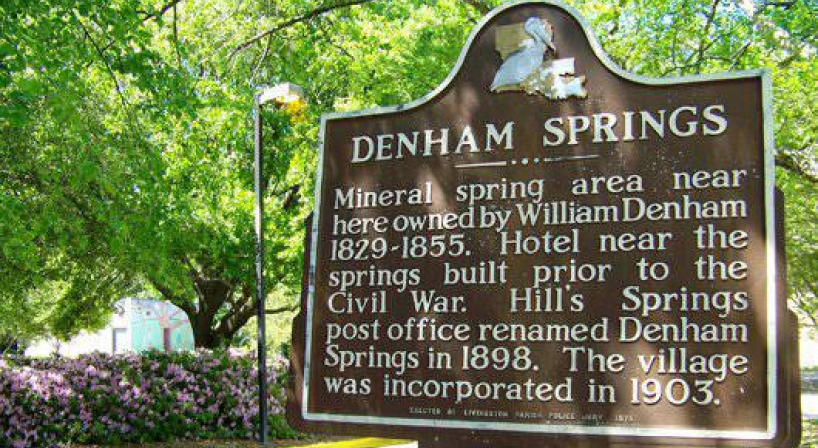Uncovering the Past

Denham Springs, Louisiana, is a historic city with a rich history dating back to 1772. It was a Confederate supply center during the Civil War and was known for its mineral springs. The arrival of the Baton Rouge, Hammond and Eastern Railroad led to its growth and development, making it a thriving center for industry, commerce, and agriculture. Today, it is a bedroom community for Baton Rouge and boasts a population of 10,335, being the largest commercial and residential area in Livingston Parish. Denham Springs is also known for its banking, commercial, and education center and its historic places, including the restored Old City Hall museum.
Early Settlements
The City of Denham Springs traces its history to 1772 when British land grants were issued along the Amite River. John Noblet and Alexander Hogue later claimed grants in what is now the older section of Denham Springs. The area was originally inhabited by the Houma Native American tribe and was later settled by French-Canadian and American settlers.

Indians Along Amite River historical marker.
Founding of Denham Springs
The city was founded in 1826 and was named after William Denham, an early settler who established a large plantation in the area. During the Civil War, Denham Springs was a Confederate supply center, and the town's citizens were actively involved in supporting the Confederate cause. The town was officially changed to Denham Springs in 1898. It was incorporated as a village on May 8, 1903 by Gov. William W. Heard, as a town on Feb. 5, 1929, by Gov. Huey Long, and as a city on Sept. 5, 1957 by Gov. Earl Long.
The Mineral Springs
The mineral springs were discovered in the late 1700s near the Amite River, about one-half mile west of today’s Downtown Antique District. Visitors came much later to benefit from the reportedly therapeutic mineral waters. The city became known for its mineral springs and was a popular destination for people seeking to cure various ailments.

Display of the Famous Mineral Springs at Bass Pro Shops, Denham Springs.
Growth and Development
The Baton Rouge, Hammond and Eastern Railroad was routed through Denham Springs, and a depot was built between N. Range Avenue and Hummel Street, serving as a center for passengers and goods. Over the years, the town that started as a number of plantations added a health resort, a saw mill, and an oar factory, with farming and timber furthering its development. In the early 20th century, Denham Springs became known for its mineral springs and was a popular destination for people seeking to cure various ailments. The city's growth continued, and by the mid-20th century, it had become a thriving center for industry, commerce, and agriculture.
Recent Years
In recent years, Denham Springs has become a bedroom community for Baton Rouge and has experienced significant growth as a result of suburbanization. Despite this growth, the city has maintained its small-town character and is proud of its rich history and cultural heritage. Today, Denham Springs is a vibrant community that offers its residents a high quality of life and a unique blend of history and modern amenities.
Historic Places
Old City Hall, located in the Historic District, was designated to be on the National Register of Historic Places in 1993 and was completely restored in 2009. The building now houses a small museum, a community meeting room, and tourist information center. The former Brown Hotel and Café, built in 1927 and now Crowder Antiques, is also on the National Register. In 1999 the Historic District became a certified Main Street District.

The City of Denham Springs Old City Hall.
Population and Demographics
In 1910, the population of Denham Springs was 574, which surged to 10,335 in 2016. The city is the largest area of commercial and residential development in Livingston Parish, which has a population of 137,000. Denham Springs is known as the banking and commercial center of the parish, as well as an education center and a place to live and conduct business.